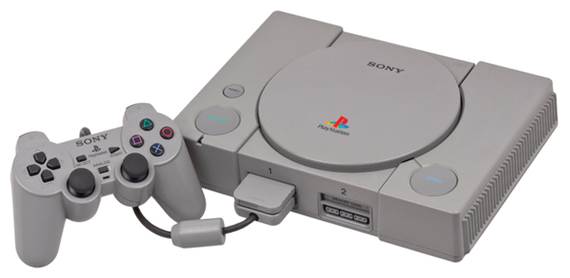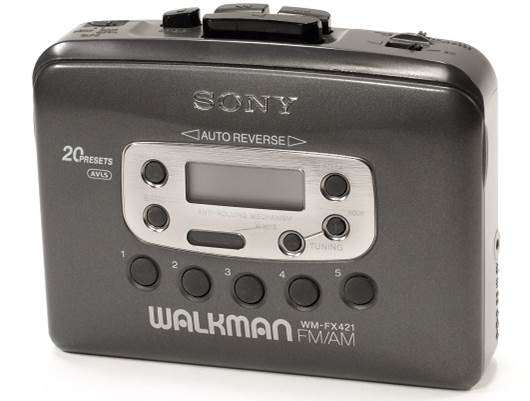Sven H. did the midnight launches for
the original PlayStation and PS2 and witnessed the following fall from grace
Sony never used to be known for video gaming.
Sure, it released an MSX home computer in the 1980s, in association with (of
all companies) Microsoft. The original PS-X was a CD-ROM add-on for the Super
Nintendo. Nintendo’s decision to pull out of that arrangement proved to be
somewhat of an error. So, yes, Sony worked with both Microsoft and Nintendo
before it produced its first actual games console.
The development of the PSX into what we now
know as the original PlayStation or PSone was done pretty much in total
secrecy, while Sony set about setting up Sony Computer Entertainment (SCE),
which in this country included the purchases of Millennium (now Studio
Cambridge) and Psygnosis (Studio Liverpool) among others. The PlayStation hit
the UK in September 1995 and thanks to Psygnosis’s Wipeout, and its
other titles, managed to explode out into the mainstream, much to everyone’s
surprise at the time. The fact was it not only impacted on Sega and Nintendo’s
business but created a whole new market for itself by targeting customers, who
traditionally wouldn’t have gone near a videogame. Sony also made it clear that
it had a long-term PlayStation business plan with a machine due like clockwork
every five years originally meant to be September 1995, 2000, 2005, 2010 and so
on for the UK and Europe. That roadmap was soon to hit problems.

The
development of the PSX into what we now know as the original PlayStation or
PSone was done pretty much in total secrecy
The PlayStation was a huge success, but it
was later dwarfed by the success of the PlayStation 2, which probably won’t be
caught as the biggest selling home videogame console format of all time. A
decline in console gaming seems all but certain, even with the ‘next
generation’ now just around the corner. The biggest key to the PS2’s success was
the fact it was a DVD player, as well as a games console, and at the point of
the later than planned release (April 2000), it was in fact the cheapest DVD
player you could buy in Japan. This propelled the machine, ugly though it was,
into many homes, with the almost full backwards compatibility with the PSOne
seriously aiding the uptake.
The UK launch in November that year at $450
put it around double the cost of the budget rebadged DVD players hitting the
likes of Tesco, but it didn’t matter. In comparison, the late-arriving
Microsoft Xbox and Nintendo Gamecube had little chance of breaking the foothold
the PS2 had managed to garner in its first year. Sony managed to build on the
success of the original PlayStation, and the software base that grew was a
wonder to behold. However, Sony’s growing arrogance meant that cracks were
beginning to show, and Microsoft’s lead in online gaming would haunt Sony in
the future. As Microsoft started making in-roads, Sony was cutting back on
internal game development and key first-party game IP had missteps aplenty.

The
PlayStation Portable was supposed to be the 21st century Walkman
The PlayStation Portable arrived in the UK
in September 2005 (ironically, the original date for the PS3 launch, had the
machine not been delayed). At the time, it was the biggest console launch of
all time, with the PSP doubling the sales figures for the Nintendo DS launch
the previous March.
The PSP was significantly more powerful
than the DS and Sony intended to do the same to the handheld sector as it had
with home consoles with the original PlayStation. The customers, however, had
other ideas, and frankly Sony’s marketing prowess had fallen away since the
launch of the original console, as had its insistence on developing a large
number of games for its consoles in-house.
The PSP was supposed to be the 21st
century Walkman, offering not only gaming but the ability to act a portable
video player (with films and TV shows available on the Universal Media Disc
format), MP3 player and internet device, thanks to its built-in Wi-Fi and
admittedly delayed web browser. The problem was that managing the videos and
music you put on the memory cards was nowhere near as intuitive as Apple’s
iPod, which had already got a major foothold by this point. The unique UMD
discs, which made a huge amount of sense in 2004 and 2005 due to the cost of
cartridge-based media, very quickly became a problem, as the cost of flash
chips and the like plummeted as digital photography drove SD cards into every
home.

The
Sony Walkman
The PSP was by no means a failure, however,
and for some time near the end of its life, it spent over a year being the
biggest selling games console, be it home or portable, in its home territory of
Japan. It’s just that next to the Nintendo DS, which obliterated the Game Boy’s
sales figures, the PSP business looked less than stellar.